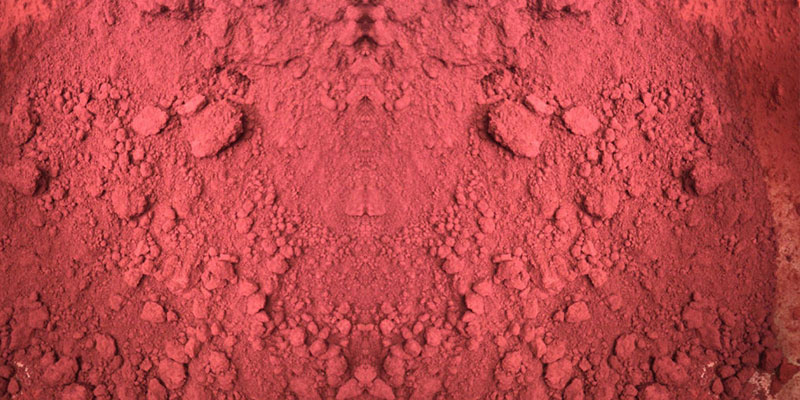Mineral Name: Natural Red oxide (Fe2O3)
Chemical properties:
| Moh’s hardness | Occurs in | Color | Class | Chemical Properties |
|---|---|---|---|---|
| 3 .5- 4 | Earth’s lithosphere, chiefly sedimentary rocks | Red | Oxides | The oxide minerals typically present in soils comprise oxides, hydroxides, oxyhydroxides, and hydrated oxides of Si, Fe, Mn, Al, and Ti |
The widespread inorganic pigment is red iron oxide. Production of iron oxide pigments is more than the production of other color pigments like yellow iron oxide pigments. Production of red iron pigment is from iron ores which is high quality and inexpensive pigment.
Natural Iron oxide powders are inorganic compounds that are appropriate for use as pigments after milling and minimal processing. They generally are the preferred choice of the natural minerals for pigmentation because they are low cost, inherently color stable, and nontoxic. Usually, red iron oxide pigments derive from hematite (Fe2 O3).
Production:
The pigments are separated from raw materials like coarse mafic minerals of paint grade Iron ore. Iron ore is separated into two grade quality namely pigment grade and metallurgical grade. The technology includes accumulation paint grade ore, crushing, screening, then the grinding in a ball mill, magnetic separation and multi-stage classification in hydro cyclones. After this, the cyclone overflow is thickened, filtered on a press filter, dried and sent to storage bin for subsequent shipment to the customer. The final pigment is suitable for use in the paint industry.
Red Iron oxide uses:
Natural Red Iron oxide Pigments are broadly applied to coloring of building materials, plastic, fibers, paper, rubber, and at manufacturing of paints. They not only give coloring, but also protecting a material from corrosion. Pigments can be inorganic or organic substances. The most general inorganic pigment is oxide iron.
Synthetic Red Iron oxide are generally used as dye and compete with Natural Red Iron Oxide in several color applications, in part because Synthetic Red Iron oxides duplicate colors more accurately and produce a significantly more variety of colors. They are manufactured using the following three methods: precipitation of iron salts, usually accompanied by oxidation; reduction of organic compounds by iron; and thermal decomposition of iron salts or iron compounds. Organic colorants can be used for some applications, but they tend to fade over time from exposure to sunlight.
Different grades of Red oxide available at Intercity Enterprises:
- Red oxide powder Natural 300 Mesh
- Red oxide powder Natural 500 Mesh
- Red oxide powder Synthetic Micronized


